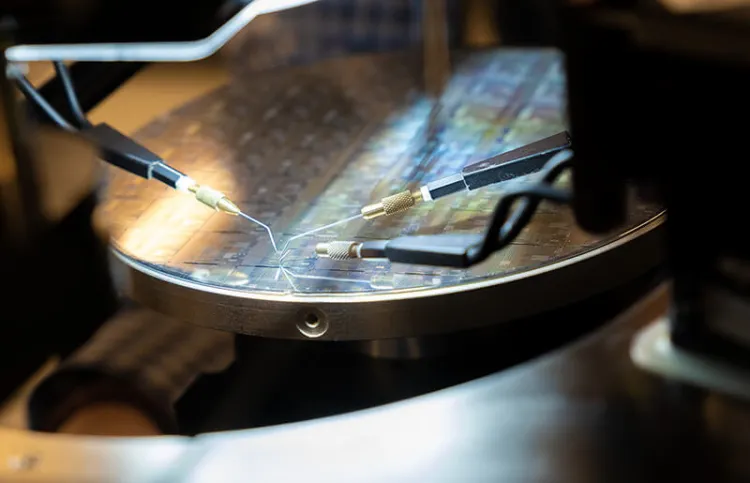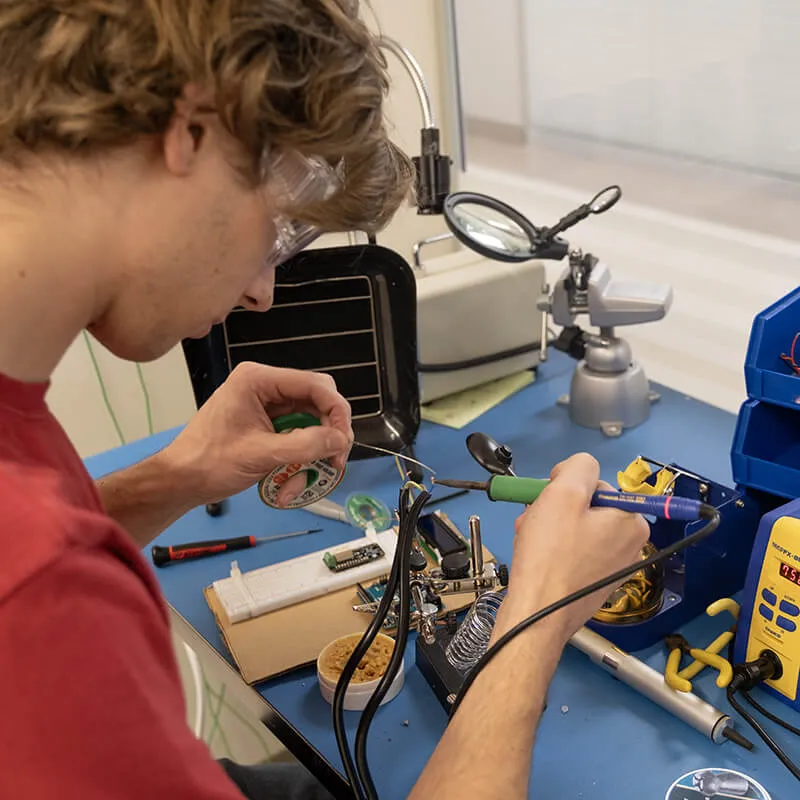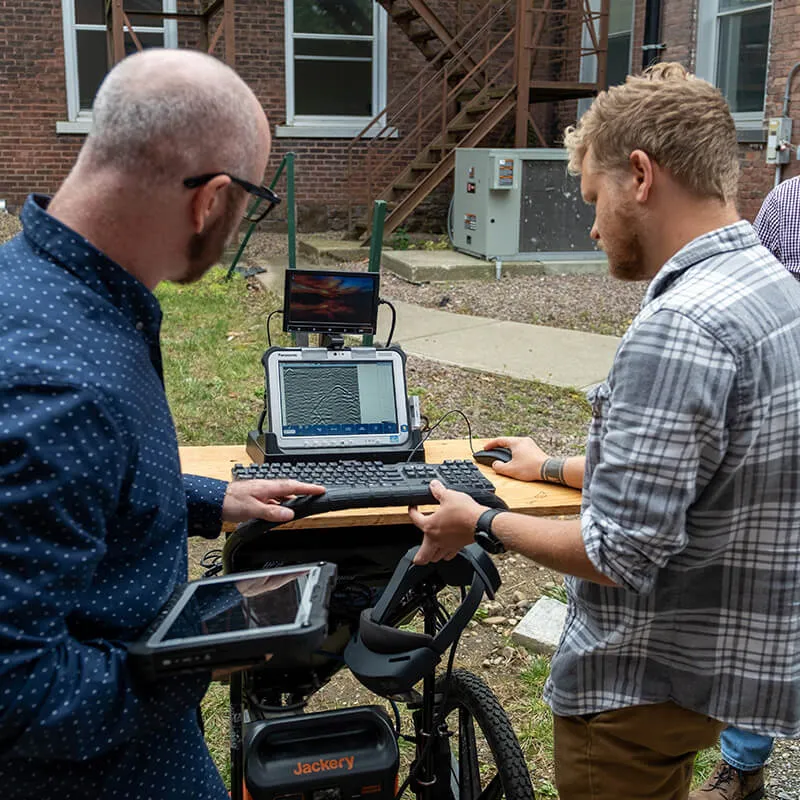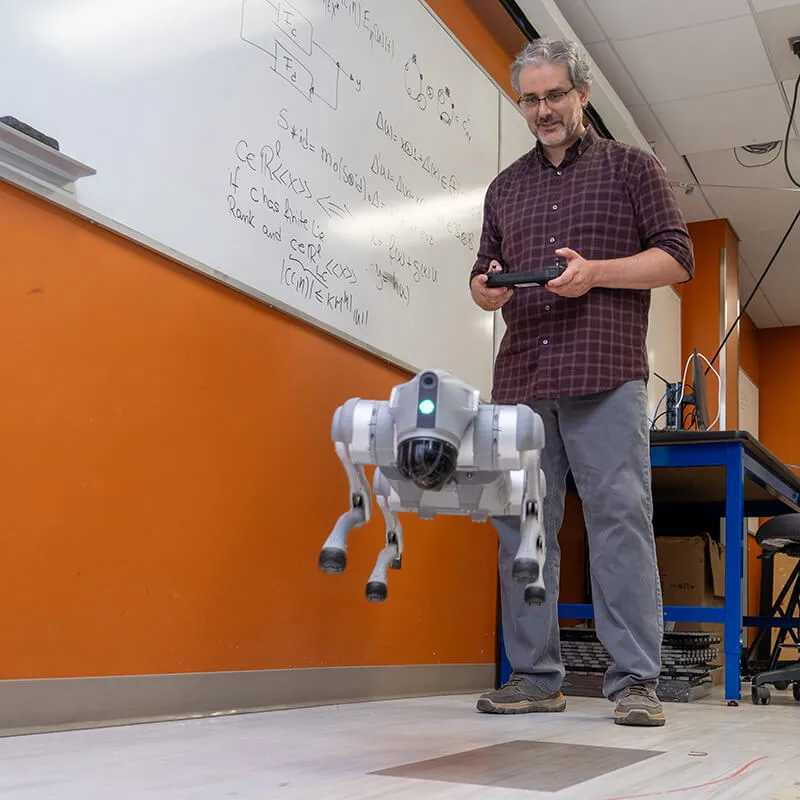With Vermont poised to play a leading role in the development and manufacture of next-generation semiconductors, a team of University of Vermont faculty members in the College of Engineering and Mathematical Sciences (CEMS) is working to inspire the State’s next generation of engineers to join the rapidly expanding field of microelectronics.
Professors Tian Xia (Electrical and Computer Engineering), Dryver Huston (Mechanical Engineering), and research assistant professor Jackson Anderson are developing a program with funding support of $295,000 from the National Science Foundation to enhance the science curriculum in Vermont high schools by incorporating an introduction to microelectronics and its many disciplines. “As a cornerstone of technological innovation, microelectronics supports the growth of modern industries and the advancement of emerging technologies,” the team shared in a letter to local and regional science teachers.
The need to fortify and expand the design and manufacturing capabilities of domestic microelectronics is a key economic and security initiative for the nation and the target of recent federal funding. Home to a large and growing contingent of semiconductor companies and their divisions as well as leading researchers and labs at the UVM, Vermont was designated as a Tech Hub by the U.S. Department of Commerce's Economic Development Administration (EDA) in 2023.
With a mission to lead the development and commercialization of specialized microchips, the Vermont Tech Hub consortium was awarded nearly $24 million in federal funding this past month to advance the development of semiconductors that leverage the advantages of using the gallium nitride (GaN) as a substrate in applications where the compound provides significant advantages over silicon-based chips.

This expansion of Vermont’s microelectronics research and industry exposes a new challenge: preparing a skilled workforce to meet industry growth. According to the Semiconductor Industry Association (SIA), the workforce needed in the semiconductor industry is expected to grow 33%, from approximately 345,000 jobs today to approximately 460,000 jobs by 2030. However, 58% (or roughly 67,000) of projected new jobs risk being unfilled at current degree completion rates.
To meet this challenge, the team at UVM aims to bridge the microelectronics education gap in Vermont by establishing partnerships with local science teachers in K-12 schools to develop a targeted curriculum around microelectronics.
“For many students in Vermont, exposure to the concept of engineering, what that entails, and how that learning path leads to different careers really doesn't happen in high school,” said Huston. “If you don't have that background or that knowledge, it's tough to determine what sort of discipline is going to be most interesting to you within that spectrum of things that are offered in engineering program like ours at UVM”.
To introduce and expand awareness of microelectronics in K-12 schools, the UVM team have secured supplemental, education-directed funding from an existing four-year, multi-million National Science Foundation grant focused on wireless infrastructure. Combined with a grant from the Semiconductor Research Corporation, the additional funding will allow targeted outreach, training, and educational activities to foster an accurate understanding of microelectronics.
To meet the program’s objectives, the team has proposed the following teacher-focused educational activities:
- The production of microelectronics learning and development materials made publicly available on a dedicated website that includes a forum for discussion and sharing.
- To provide continuous technical support to science teachers throughout the project, the team plans to recruit graduate and undergraduate student researchers to assist in developing learning materials, projects, and curriculum outlines. The students will also be available to visit local K-12 schools to mentor teachers and their students.
- To provide hands-on opportunities, the program will fund and develop “design kits” outfitted for active learning in the classroom as well as serve as a resource for student clubs centered around microelectronics.
- During the summer, the program will host a week-long learning retreat where K-12 science teachers will be invited to campus to collaborate with faculty from the College of Engineering and Mathematical Sciences (CEMS) to develop and discuss educational and extracurricular activities for their students. With a mix of technical lectures and hands-on projects, the team hopes by the end of the week that the participating teachers will be well prepared and motivated to bring the study of microelectronics into their classrooms.
This unique outreach program is just one of many recent initiatives the college has undertaken to better prepare students for careers in this rapidly expanding field. This past year, new undergraduate and graduate semi-conductor certificates were introduced to provide CEMS students with the hands-on experience and interdisciplinary exposure required for such careers.
In addition, a certificate in Autonomy and Robotics will debut this coming fall, to address the growing need for workplace expertise in these fields. These certificates provide employers confidence that students graduating from CEMS programs are prepared and knowledgeable in the field and ready to find solutions to the next generation of challenges in the field of microelectronics and the industries it supports.
For more information about this program, please contact:
Tian Xia, Professor, Electrical and Computer Engineering, UVM
Dryver Huston, Professor, Mechanical Engineering, UVM
Jackson Anderson, Research Assistant Professor, Electrical and Computer Engineering, UVM



